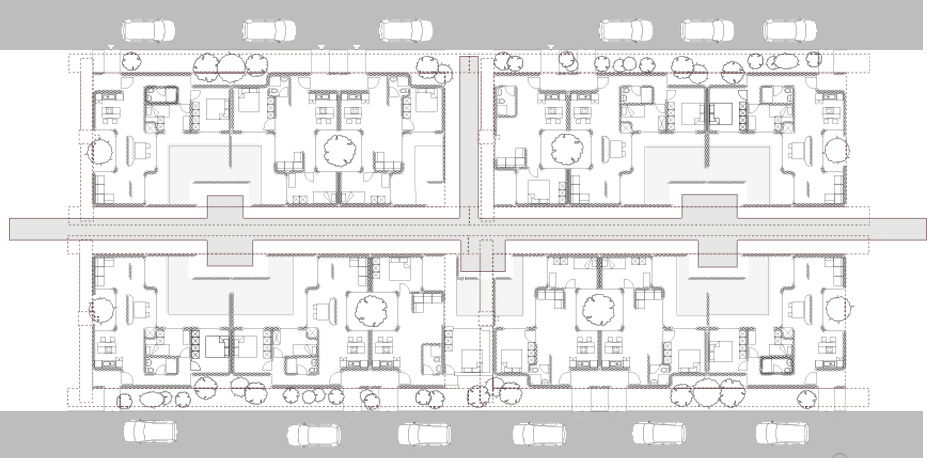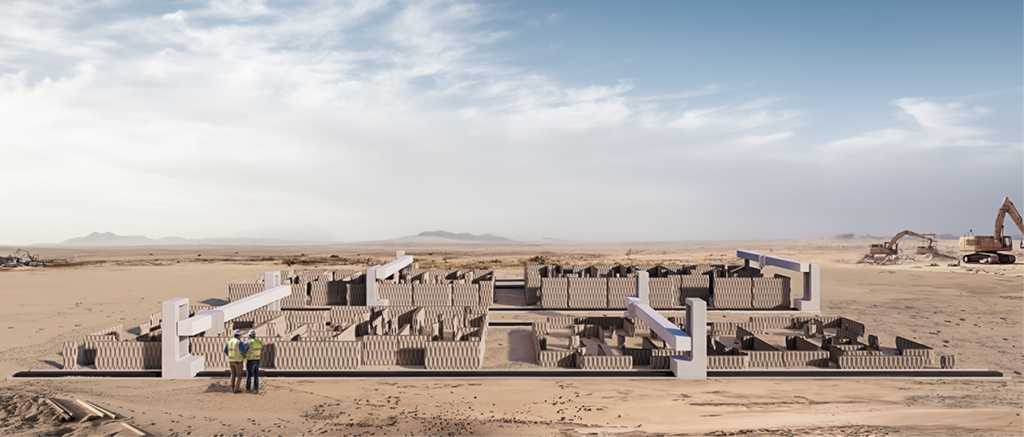A Family-Oriented Home
Based on the ICON’s Competition Initative 99 brief, this project was developed as part of the Vision Course of 3DPA 23/24.
The project was awarded 1st prize in the student category.
https://www.iconbuild.com/initiative-99

While investigating demographics in Austin, we found that more than one quarter of the families there are single-parent households. Of these, the vast majority are single mothers.
With these statistics in mind we arrived at three design considerations: the needs of a single parent household, Austin’s climate, and the unique constraints and abilities of the advanced Vulcan 3D printer.
We asked the question, what is a 3D printed house capable of? We found our answer in Casa Fami, where the layout, roof, and walls work together cohesively to make a home that is as beautiful to live in as it is comfortable.
Design Intentions

A historical solution to passive temperature control was found in the use of courtyards. These bring two benefits: ambience and cooling. Every room has access to a courtyard, maximizing the availability of passive airflow. Through courtyards with vegetation and water collection, hot air can be drawn in and cooled before being redirected into the house. Additional cooling and conditioning occurs as it passes through our temperature-regulating, porous walls.
The layout of this home is such that there is a view to a courtyard from almost any point in the house. The twin purposes of this feature are the easy supervision of children playing in them, but also the use of calming green spaces which bring a sense of peace to the home. They add serene internal views, no matter the external conditions. Even in a built-up area where there are otherwise no vistas to be had, an internal courtyard can provide a glimpse of serenity and nature to a home’s inhabitants.
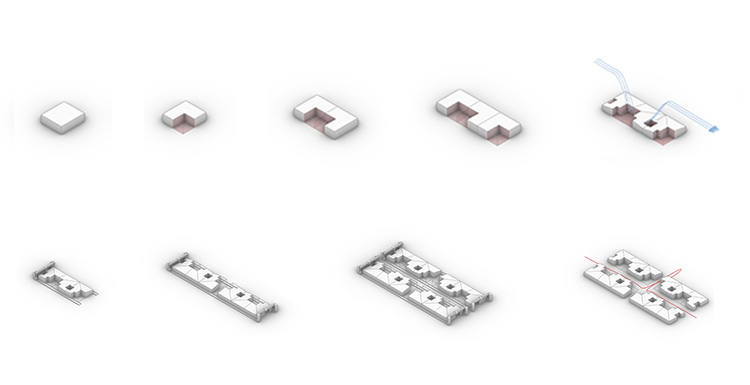
Print dimensions and budgetary considerations determine the spatial constraints of the home, defined as a general rectangular design frame. Voids for ventilated courtyards, which lie at the center of our design vision are carved out of this general volume. Two mirrored volumes generate a shared courtyard that encourages neighborly connections. Three such volumes can be printed on one Vulcan print bed.The combined effect of these considerations is a home that maximizes the use of passive temperature control, increasing comfort and reducing utility bills. It is a home that privileges sight, and when combined with other similar homes, creates shared spaces where meaningful and supportive connections can arise among neighbors and community members.
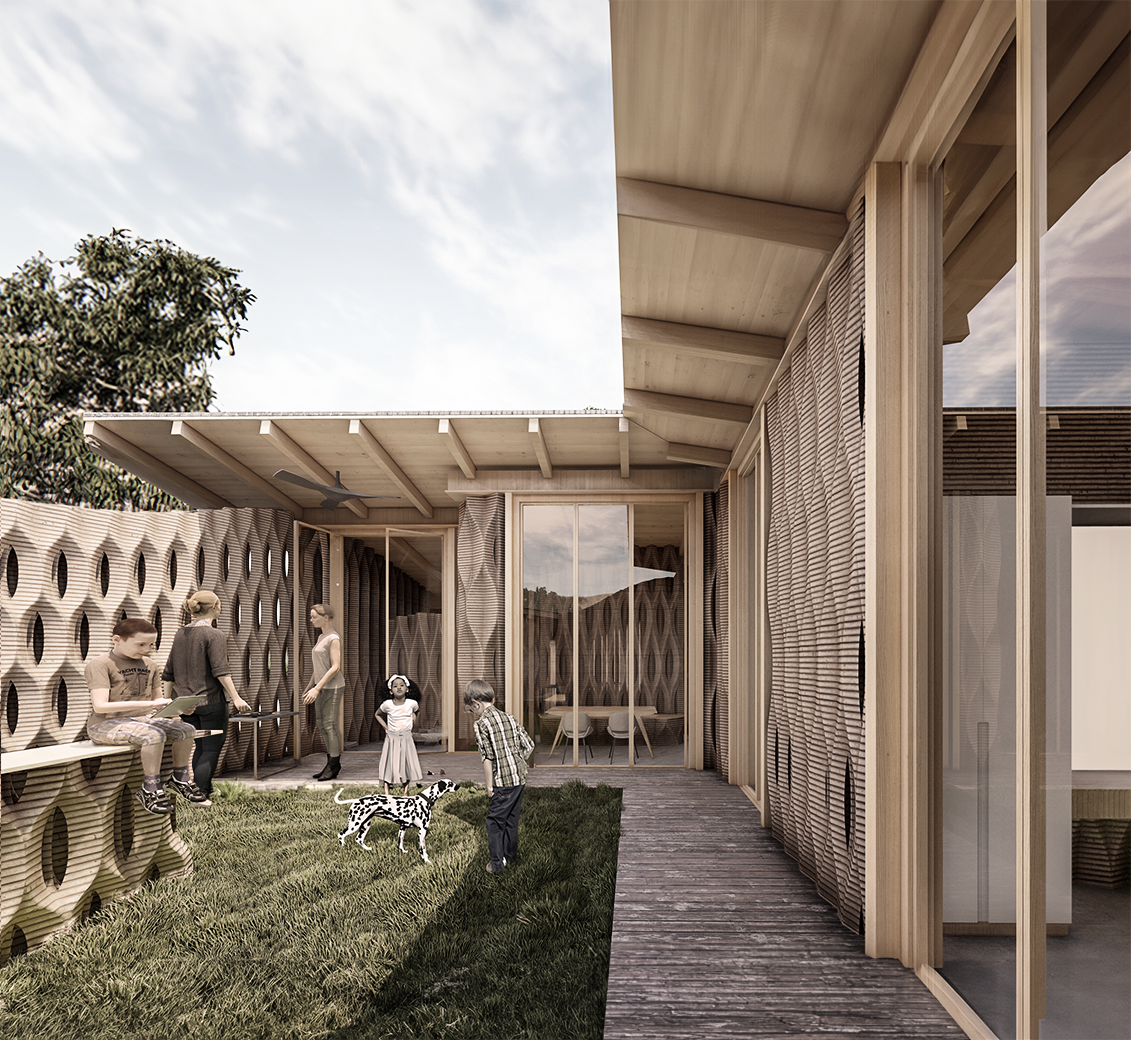
Performance Tectonics

Computational design shapes the walls. Selectively porous, they serve multiple purposes: allowing light, ensuring privacy, and channeling airflow. Their unique composition and structure enable them to cool humid air and maintain a comfortable indoor climate. 3D printed walls allow for an array of wall typologies that respond to the different climatic, visual, and practical requirements of the floor plan. The walls can be porous in certain areas to conduct airflow, while being closed and insulated in others to retain heat. For light permeability, openings in the walls can be precisely oriented; direct views, selective glimpses, diffuse light that tempers the sun’s harshest rays are all possible. Surfaces can vary from flat to richly textured within the same wall, allowing for the placement of furniture or wall hangings as desired. These parameters can be functional; but also provides a sense of organic sophistication to the space.



Building Structure
The roof is kept to a simple timber beam structure to reduce costs while using sustainable materials. The load from the roof is transferred evenly from the beams through horizontal caps on an outer ring of load bearing walls. Inexpensive, recyclable, commonly available metal sheeting shields the roof from the deterioration and rain water. The roof is designed in specific inclination to avoid rain water accumulation while its overhang protect the walls from rain fall and provide need shade in extreme summer days.

Internal Views
The house is designed so that views of the courtyards are available from any part of the home. This serves two purposes. First, it facilitates the supervision of children playing in the sheltered spaces. Second, serene glimpses of natural space are always in view, while the house is flooded with natural light. Wall-to-ceiling courtyard windows frame peaceful views for quotidian enjoyment. Designed with families in mind, particularly single parents, the house boasts large courtyards for safe, supervised play, and communal spaces that foster neighborly support and interaction.
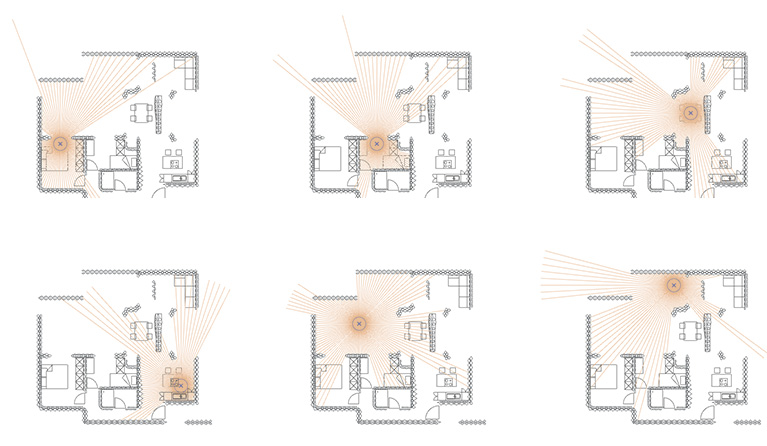
Responsive Walls
Casa Fami is introverted in nature, providing internal views through courtyards such that every home is a person- al oasis, even in a busy, built up environment. Sheltered and comforted, yet not closed off from the outer world. Different regions of the home have varying degrees of openness to the external environment, leaving the choice of interaction open to the inhabitants. Inner patterns within the wall can be adjusted to various purposes. Precise openings permit selective ventilation. Closed cavities can be used for insulation, and utilities can be routed through as needed. Using a parametric pat- tern, mass can be increased to provide load bearing performance or to provide sound insulation between spaces.

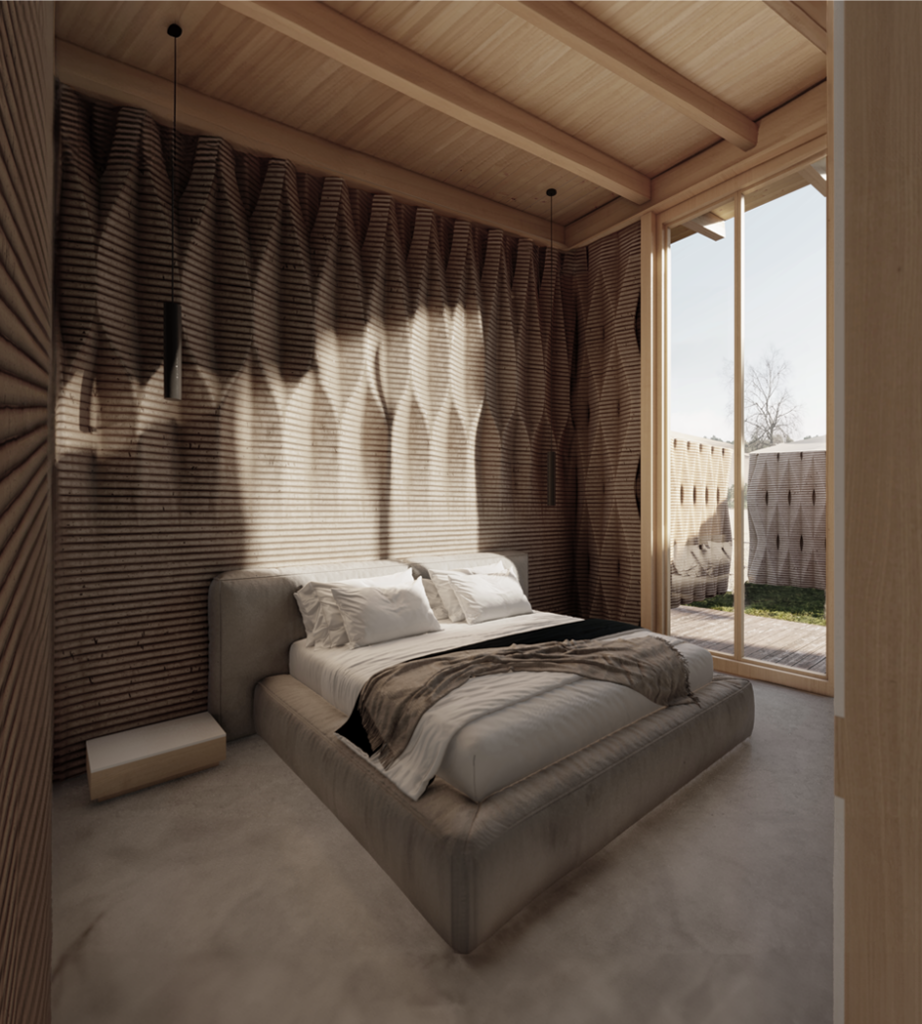
Privacy and Safety
Openings in the walls can be oriented in such a manner as to provide line of sight only in selected areas. In this way they can dictate which areas are sheltered and private from the outside world, and which are open to interaction with neighbors and the community. For instance, the openings in the garden walls are shaped in such a way to protect the bedrooms from outside view, while still permit ting someone sitting in the courtyard to see out through the walls.

Proliferation Iterations
An aggregation strategy allows for homes of various scales and layouts to be built within the same community. As multiple homes are built together, unique and meaningful spaces begin to emerge. Community interactions can take place in shares spaces, helping to provide the support that single parents need. The space between print beds are oriented towards each other to provide distinct spaces. The space used for the installation of Vulcan printers is repurposed after construction to allow for pedestrian circulation and community inter- actions on the interior, and vehicle access on the exterior. On the short axis, the print bed footprint artifact can be used alternatively as an access path, or can be built over with conventional materials allowing for a variety of housing scales.
